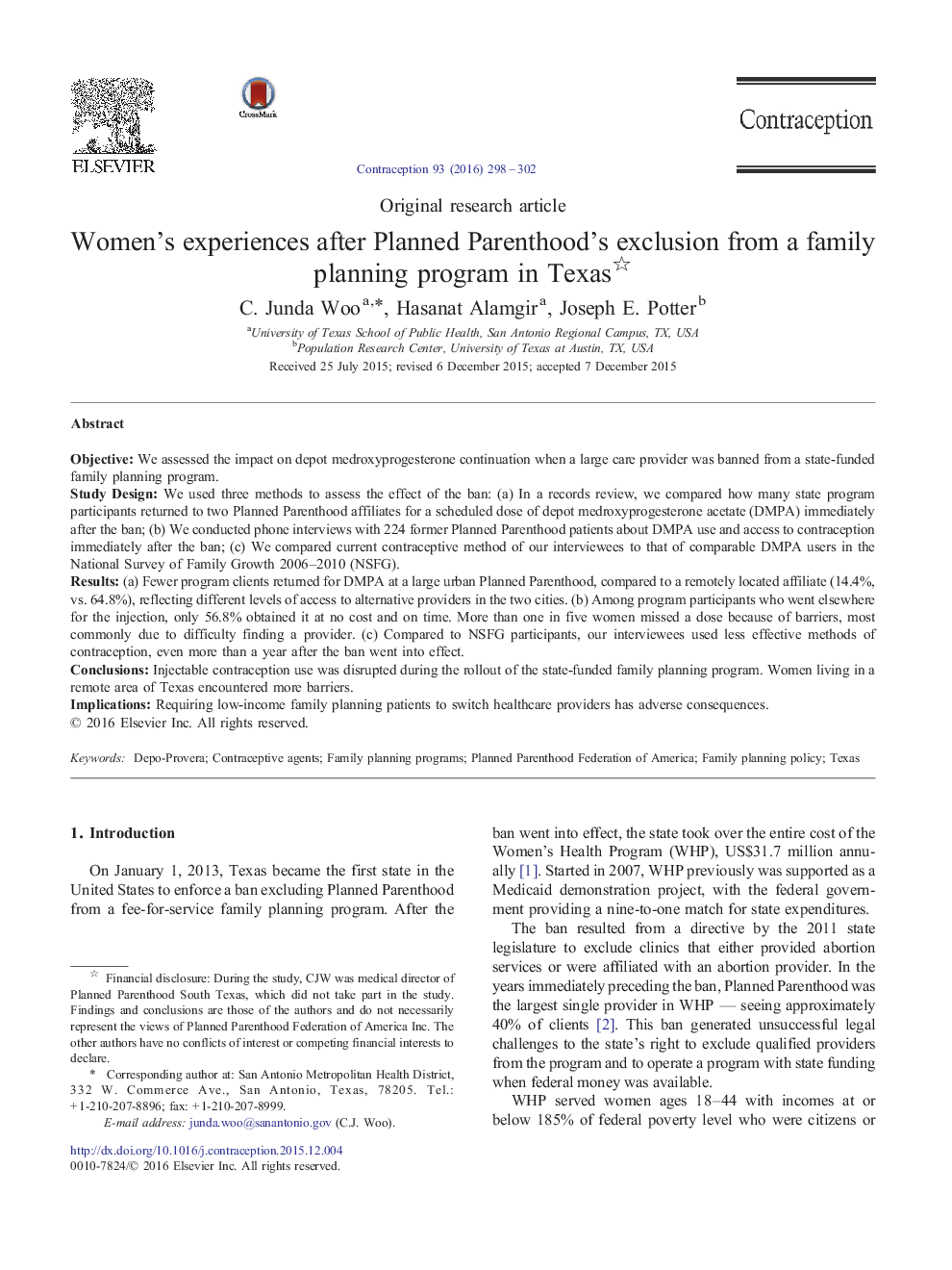| Article ID | Journal | Published Year | Pages | File Type |
|---|---|---|---|---|
| 6170743 | Contraception | 2016 | 5 Pages |
ObjectiveWe assessed the impact on depot medroxyprogesterone continuation when a large care provider was banned from a state-funded family planning program.Study DesignWe used three methods to assess the effect of the ban: (a) In a records review, we compared how many state program participants returned to two Planned Parenthood affiliates for a scheduled dose of depot medroxyprogesterone acetate (DMPA) immediately after the ban; (b) We conducted phone interviews with 224 former Planned Parenthood patients about DMPA use and access to contraception immediately after the ban; (c) We compared current contraceptive method of our interviewees to that of comparable DMPA users in the National Survey of Family Growth 2006-2010 (NSFG).Results(a) Fewer program clients returned for DMPA at a large urban Planned Parenthood, compared to a remotely located affiliate (14.4%, vs. 64.8%), reflecting different levels of access to alternative providers in the two cities. (b) Among program participants who went elsewhere for the injection, only 56.8% obtained it at no cost and on time. More than one in five women missed a dose because of barriers, most commonly due to difficulty finding a provider. (c) Compared to NSFG participants, our interviewees used less effective methods of contraception, even more than a year after the ban went into effect.ConclusionsInjectable contraception use was disrupted during the rollout of the state-funded family planning program. Women living in a remote area of Texas encountered more barriers.ImplicationsRequiring low-income family planning patients to switch healthcare providers has adverse consequences.
